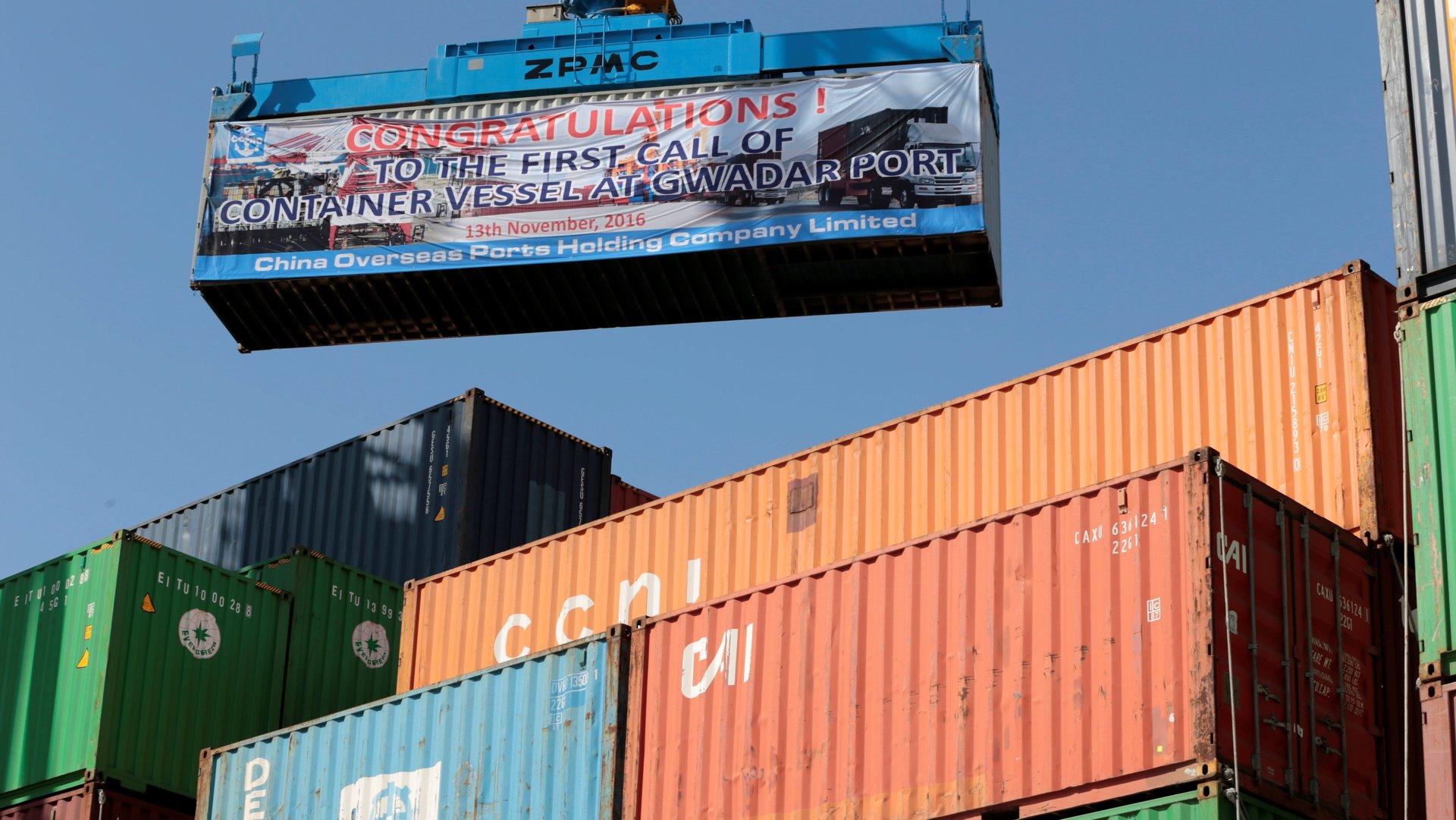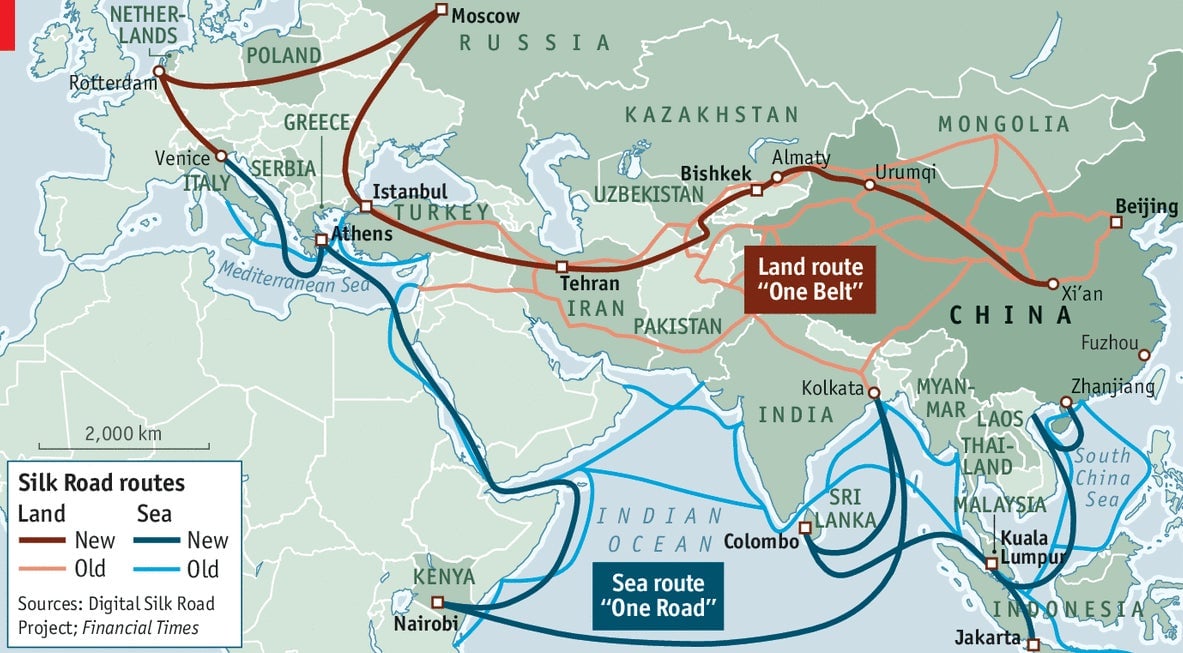More neighbors are saying “no thanks” to Chinese money—for now
There’s a learning curve to becoming a superpower, as China, having recently suffered setbacks with two of its neighbors, is learning.


There’s a learning curve to becoming a superpower, as China, having recently suffered setbacks with two of its neighbors, is learning.
Pakistan and Nepal, each involved in China’s Belt and Road initiative, a massive infrastructure push, announced last month they would no longer seek Chinese funding for two large-scale developments. In mid-November, Pakistan said that China’s conditions for financing the long-delayed $14 billion Diamer-Basha dam on the Indus River—part of the roughly $60 billion China-Pakistan Economic Corridor—”were not doable and against our interest,” including as it did China taking ownership of the entire project. Pakistan decided to go ahead with the dam, but to build it by itself.
Around the same time, Nepal decided to stop the $2.5 billion Budhi Gandaki hydropower plant from going forward in the hands of China Gezhouba Group, citing irregularities and the lack of a competitive bidding process. Last week, Nepal said that it would go ahead and build the dam itself, handing the 1,200-megawatt project over to the state-owned Nepal Electricity Authority.
“Very early on the countries along the Belt and Road initiative were at first very excited and happy about Chinese investment,” said Christopher Balding, professor of economics at Peking University HSBC Business School. “But there have been significant changes: Countries now look at how China has behaved with Sri Lanka or with Mexico.”

In Sri Lanka, the Hambantota port is now on a 99-year lease to China Merchants Port Holdings, which has a 70% stake in the venture. In 2015, Sri Lanka sought a review of how construction of the port had been awarded and halted its development. But in the face of economic and financing difficulties, it backtracked. With some $8 billion owed to China, thanks to loans taken to rebuild after its civil war, Colombo agreed to convert some of this debt into equity in projects.
Further afield, China has asked Mexico for a $600 million refund (link in Spanish) for the scrapping of a railway project.
While most countries along the Belt and Road initiative welcome foreign investment and assistance in building modern infrastructure, the pressure being exercised by Beijing doesn’t always go down well. Countries on the receiving end of Chinese cash are starting to realize that when all is done and dusted, the infrastructure that is built is likely to end up controlled by China.
A common pattern has been for China to sign controversial projects when a pro-China government is in place—as was the case with Sri Lanka’s former president Mahinda Rajapaksa and the Hambantota port deal—only to see them revisited once less receptive administrations are in power. In Nepal, outgoing prime minister Pushpa Kamal Dahal, chairman of the Communist Party of Nepal (Maoist Centre), signed a preliminary agreement for the dam in June, just days before he relinquished his post to the rival Nepali Congress as part of a pre-existing power-sharing agreement. Current deputy prime minister Kamal Thapa criticized and scrapped the project for not having gone through open bidding as required by law.
That said, China’s rise in Asia and the world is beyond dispute—and its might is likely to grow as it proceeds firmly with its Belt and Road initiative. And in several countries in Asia and elsewhere, particularly those facing global criticism on human rights or other issues, China’s infrastructure spending plans and hands-off stance on such touchy topics are likely to overcome any reservations toward the country.
Take the example of nearby Myanmar, which in 2011 saw the cancellation (paywall) of a major Chinese hydroelectric project in the face of environmental concerns. In the years since then, Myanmar has been on the receiving end of increasing international criticism due to its purges of the Muslim Rohingya minority. Criticism deepened this year after a particularly harsh pogrom in August saw more than half a million flee to neighboring Bangladesh.
In the same month that the nonprofit Fortify Rights and the US Holocaust Memorial Museum released a major report documenting killings and rape of Rohingya, and the US made the determination that the Myanmar military is carrying out “ethnic cleansing,” China proposed a Pakistan-like economic corridor crossing the country. China is already helping to build a $7 billion port in Rakhine, the western Myanmar state that has seen the worst of the violence. Last week, as Myanmar continued to face criticism over what many see as a flawed agreement with Bangladesh to accept the return of the Rohingya—one that China may have played a role in brokering—Aung San Suu Kyi was in Beijing for a conference of international political parties, and for more discussion on investment.
China can also take heart that the vagaries of electoral fortune in democracies can sometimes revive projects China wants to back. The fate of the Nepali dam, for example, could change yet again as the country holds parliamentary polls for the first time since the end of its civil war just over a decade ago. The final stage of voting will take place Dec. 7. The two main blocks contesting the elections represent a conflicting set of alliances, with one of them saying that it will, should it win, hand the project back to China.